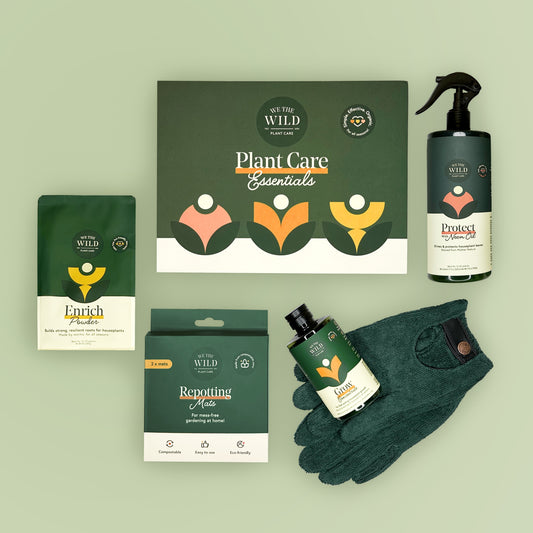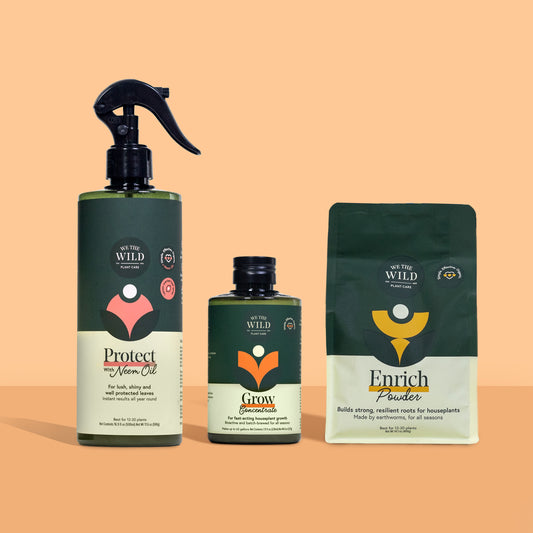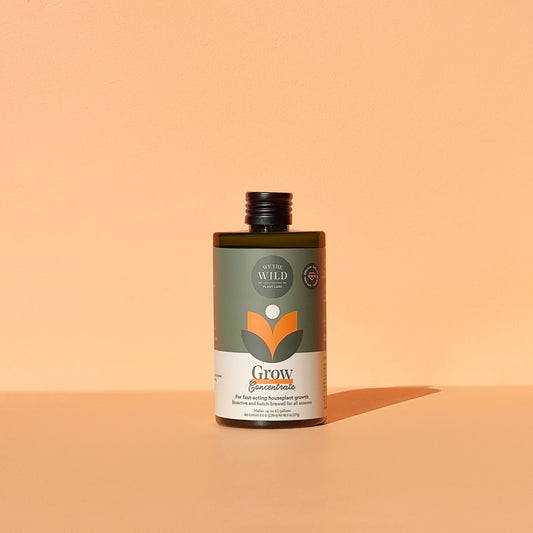So, you’ve decided to welcome a peace lily into your home—congrats on choosing a houseplant that is super lush, easy to care for and perfect for the beginner houseplant parent! But did you know, there's over 50 different species of peace lily? The latin name, Spathiphyllum, can have small leaves, large leaves, variegation, different colors. The most common type of peace lily has dark green foliage with stunning large ribbed leaves and tall white flowers - gorge! Now, let's help you care for your peace lily (and help you see some of those stunning flowers year in, year out).
How to find the best light for your peace lily
Peace lilies are like those people who thrive on compliments but get shy when the spotlight is too bright. When looking for the perfect place for your peace lily, look for a space that has bright, indirect light. As a general rule of thumb, if you can comfortably read a book without the need for lamps or lights, it's the perfect spot. Pick a cozy spot that is near a window where the sunlight filters through sheer curtains—enough to keep the room glowing, but not so much that the leaves might get direct sunlight that could burn them. If the leaves start turning yellow, it could be your peace lily’s way of telling you it’s getting a bit too much sun. Move it back a little, and you’re golden!
How do I stop overwatering or underwatering your peace lily?
One of the best bits about peace lilies is that they are pretty chill when it comes to watering. They tend to like their soil to be consistently moist—like a well-wrung-out sponge. If your soil is sticky like cookie dough, or no matter how much you water it, it stays dry, it could be a sign that you need better soil that retains the right amount of moisture. If you want to know if it's the right time to water, give this hack a go! Stick your finger into the top inch of soil. Does it feel dry? It should be time to water. If it's still moist, give it a few more days and check again. If the leaves start drooping dramatically, they’re thirsty, but they’ll perk right up after a good soak.
What's the best temperature for my peace lily?
Ok so you have to think about peace lilies in the context of their natural environment. They are tropical plants which means they love warm, stable temperatures. Think about how you keep your plant in conditions that are close to the tropics; a temperature 65°F and 85°F (18°C to 29°C) is best. Combine that with a bit of humidity, and your peace lily will REALLY thankyou.
Did you know that sudden temperature changes can stress out houseplants? Peace lilies are not a fan of drafts, air-conditioner air or heater, so it's best to keep them well away from open windows and your heating/cooling systems.
What's the best fertilizer for my peace lily?
Peace lilies are very sensitive to chemical fertilizers, so you should steer clear of any synthetic NPK fertilizers. Use a bioactive fertilizer like our Grow Concentrate instead; it gives your peace lily nutrients in a more gentle, bioavailable way. Grow Concentrate is formulated to work with your peace lily's natural function, rather than shocking it into growing faster. Combine it with our slow acting Enrich Powder for improved root and soil health, and you'll see your peace lily turn from blah, to WOW!
How should I prune my peace lily, and when is the best time to give it a snip?
Pruning your peace lily can encourage new growth. This is because plants divert energy into healthy foliage, rather than wasting energy on supporting unhealthy leaves. You can snip any crusty, dry or yellowing leaves at the base of the plant. If your peace lily has brown tips, you can gently snip these to increase the beauty of your new houseplant!
And don’t forget to dust those glossy leaves! Dust and toxin build up can be a big problem for peace lilies because they block the suns rays from falling on the plant. This in turn reduces the plants ability to photosynthesise, which then reduces the plant's ability to grow and stay healthy. Use our Leaf Cleaning Gloves and Protect Spray with Neem to keep your peace lily leaves in tip top condition!
How do I know if my peace lily is sick or dying?
Ok, ok, you may have seen some of your fave plant influencers show dramatic before and afters of these houseplants. The truth is, peace lilies can be very dramatic. If you suddenly notice that your peace lily has drooped overnight, not to worry! It just means that they're thirsty AF, and need a good drink. Some other issues you might notice is that the leaves start to turn yellow. This could be a variety of issues, but the most common is too much light. Notice the tips are turning brown? The air around your plant could be too dry. Consider a pebble tray or misting to increase the humidity around the leaves.
Are peace lily plants safe for pets?
Absolutely not. While peace lilies are stunning houseplants, it's very important to not that, just like all other lily plants, they’re toxic to pets. If you have curious cats or dogs, it's best to avoid peace lilies, or place them in a room where your animals can't access. If you think your pet has ingested a part of a peace lily, it is important to seek medical assistance immediately.





